Greenwood Hotel
674 Whitton Avenue WestNortholt
UB5 4LA
This pub is not only a grade II listed building, it is also a Three Star pub on the Campaign for Real Ale’s (CAMRA) National Inventory with an interior of outstanding national historic importance, and the description is as follows: "A large inter-war improved public house built in the late 1930s in Neo-Georgian style for Courage & Co, possibly by the brewery architect. It is remarkably little altered retaining 5 rooms and was impressively restored by Wetherspoon's (prompted by the Conservation Officer of Ealing Council) prior to re-opening in 2016 after a 6 year closure.
The entrance lobby on the south east corner retains a tiled wall. The main bar on the left retains its original bar counter – the end section was re-instated to its original length in the Wetherspoon;s restoration. The bar back fitting is also original but some lower shelves have been replaced by fridges. The walls have original panelling to two-thirds height but the dado panelling on the wall at the end of the servery is from 2016. There is a stylish mosaic-tiled fireplace with Art Deco wood surround at one end and a tiled and wood surround fireplace at the other end that are both original. A number of original windows advertising ‘Luncheons & Snacks’, ‘Wines & Spirits’ survive. A former single WC also survived but now is a ‘baby changer’.
The Lounge bar in the middle, which is slightly opened-up to the main bar, also retains its original curved inter-war bar counter and Art Deco bar back fitting (most of lower shelving to fridges) with plenty of leaded glass windows around the servery. The room is lit by a leaded glass skylight and has more panelling on the walls to two-thirds height. Art Deco cornices survive here and elsewhere. There is another stylish mosaic-tiled fireplace with Art Deco wood surround.
The off sales shop remains but has been converted into a snug. Also on the east side of the pub is the Green Room where the original curved bar counter and bar back have been retained but are redundant so the counter acts as a long table for customers with bar stools on both sides of it. Dado panelling looks original.
The Assembly Room has been converted into another seating area having been fitted out with seating and tables in open booths but does retain the stage (adorned with a selection of musical instruments that were discovered during the pub’s restoration) and is lit by a clerestory. To serve this area some modern double doors were removed and a small bar counter added in the style of the inter-war ones. Lots of original timber doors with brass handles remain. Some toilets have original fittings.:
The listing description is as follows: “Public house, late 1930s, for Courage and Co, possibly by the brewery architect. EXTERIOR: a typical, if rather grand and large, inter-war improved public house. Such buildings sought to create a feel of historical permanence in areas undergoing rapid change, and hence a historicist style was deployed. The Greenwood has smart neo-Georgian red brick elevations with pediments, dentil cornice, neo-classical door cases and rows of leaded light windows on the ground floor, sash windows above. The butterfly plan allows plenty of light into the three main bar areas (the saloon bar, the main bar, and the public bar) and there may have also been outdoor seating in the forecourt. The offsales shop to the right of the main entrance survives with two large shop windows. To the rear of the building is a large function room, called 'Assembly Hall' in the coloured glass fanlight to its separate entrance. There are a number of signs giving the name of the pub which are mostly modern but may cover older signs; the cream and green tiled sign inside the entrance to the saloon bar is the only visible historic sign. INSIDE: the survival of original features is very good. The main rooms have simple panelling to picture rail height, Art Deco-style cornices and timber doors with brass handles. The bar and back bar which run through the three principal lounge areas are original, although the overbar has been added later. The main bar area has an octagonal coloured glass skylight, glazed partitions and a stylish mosaic-tiled fireplace (there is a second such fireplace in the adjoining bar and two plainer ones elsewhere). There is also a billiard room. The large function room, which is lit by a clerestory, is decorated with a coffered ceiling, dentil cornice, curved brackets and mirrors set in wood lugged surrounds. It retains its stage, proscenium and a lighting scheme of the late 1930s. There is a second, smaller function room which has an original bar counter and back bar. The function room gents' lavatories retain their original sinks, urinals and tiling. The section of the upper floor that was inspected has small rooms accessed from a central corridor, some of which retain their fireplaces and wall cupboards. Originally these may have been accommodation for motoring customers. HISTORY: The Greenwood Public House was built by Courage and Co in the late 1930s, just before the outbreak of World War II. It does not appear on the Ordnance Survey map of 1935 but must have been built before wartime building restrictions began in 1939. The first licensee was Wilson Catering Co. Investigation in the local studies library has not revealed the name of the architect. The only clue is that a nearby pub, The Granville Hotel, was opened by Courage and Co in April 1938 and tenanted to the same catering company. The press report of its opening does not refer to the name of an architect, and so it may have been the brewery's in-house architect who drew up plans for both public houses. The Greenwood was built as an 'improved' public house. Such establishments, built in great numbers between the wars, rejected the flamboyant architecture, brilliant décor and small bar layout of the late Victorian 'gin palaces'. Instead they aimed to encourage sensible drinking and to attract respectable customers with vernacular or Neo-Georgian exteriors and an open plan interior, with large, clear glass windows and tasteful décor. Many included a restaurant, billiards room or function room in order to encourage activities other than just drinking to take place inside. Those improved public houses situated close to major roads sometimes had accommodation for travellers available too. The Greenwood was built to serve the rapidly expanding suburbs of Greenford and Northolt which were developed in the 1930s and after World War II when the Central Line railway was extended to connect these places to central London. Its architecture and facilities epitomise the restrained respectability of the suburbs in their inter-war heyday. SOURCES: G Brandwood, A Davison, and M Slaughter, 'Licensed to Sell: the History and Heritage of the Public House' (2004) G Brandwood and J Jephcote, 'London Heritage Pubs: an Inside Story' (2008). REASONS FOR DESIGNATION: The Greenwood PH is listed at Grade II for the following principal reasons: * its architecture and facilities, including off-sales shops, epitomise the restrained respectability of the suburbs in their inter-war heyday; * the Neo-Georgian style is highly characteristic of the traditionalist tastes of breweries and their expanding suburban clientele; * the interior survives very well and includes stylish inter-war features such as fireplaces, cornices, bar, and panelling; * there is also an impressive assembly hall complete with stage, proscenium, doors and a set of 1930s light fittings, an unusual feature and a rare survival..”
The WhatPub link is here: WhatPub/Greenwood Hotel
The Pub Heritage Group link is here: PHG/Greenwood Hotel
The Greenwood Hotel featured on the Metroland: Daytime Crawl of West Middlesex on 15 October 2016, and features on the Metroland Revisited: Daytime Pub Tour of West Middlesex on 19 October 2024.
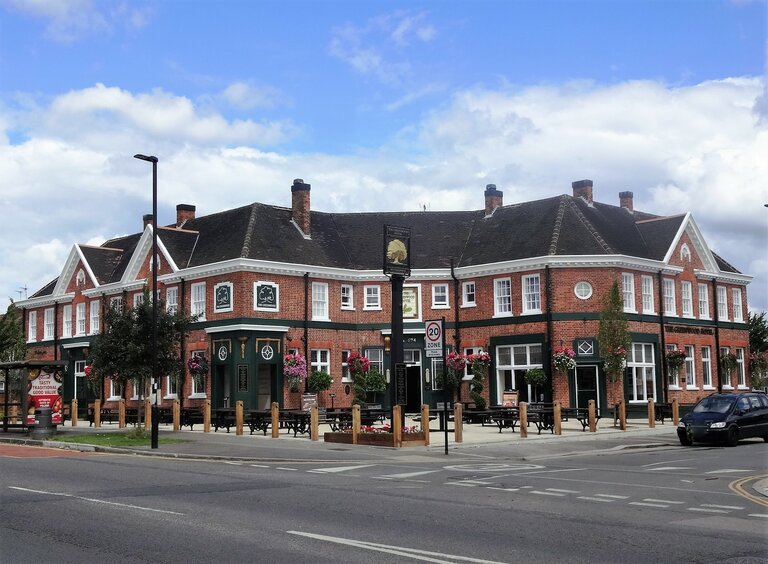 Exterior
Exterior
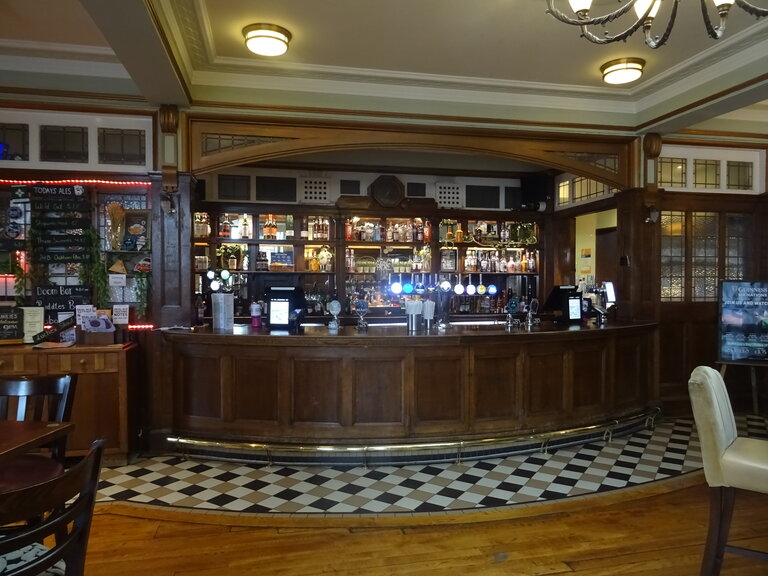 Lounge Servery
Lounge Servery
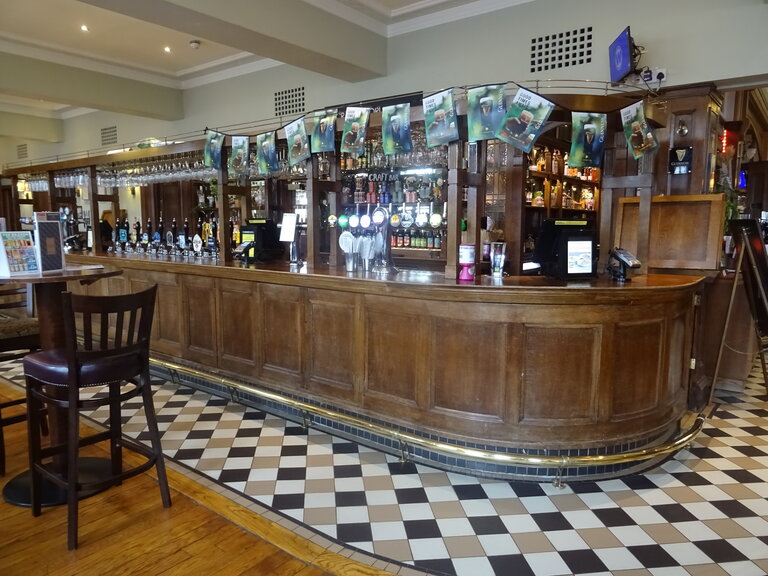 Saloon Bar
Saloon Bar
 Saloon Bar
Saloon Bar
 Green Room
Green Room
 Former Ballroom
Former Ballroom
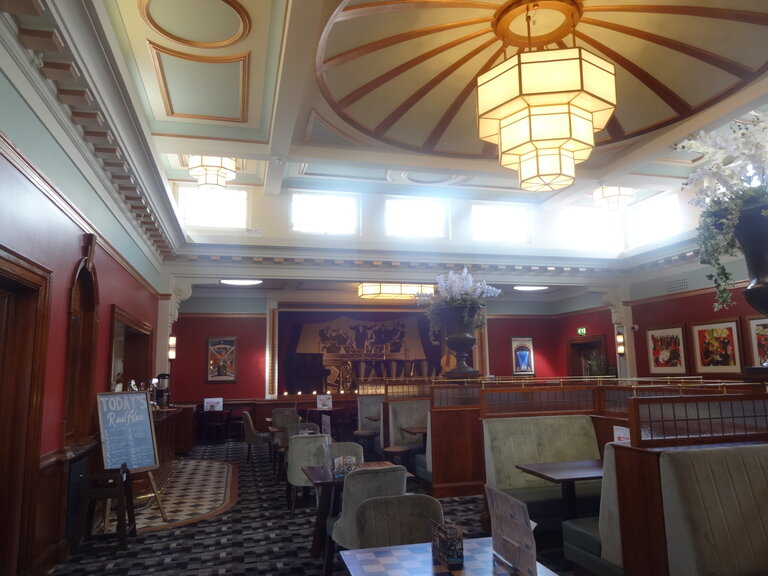 Former Ballroom
Former Ballroom
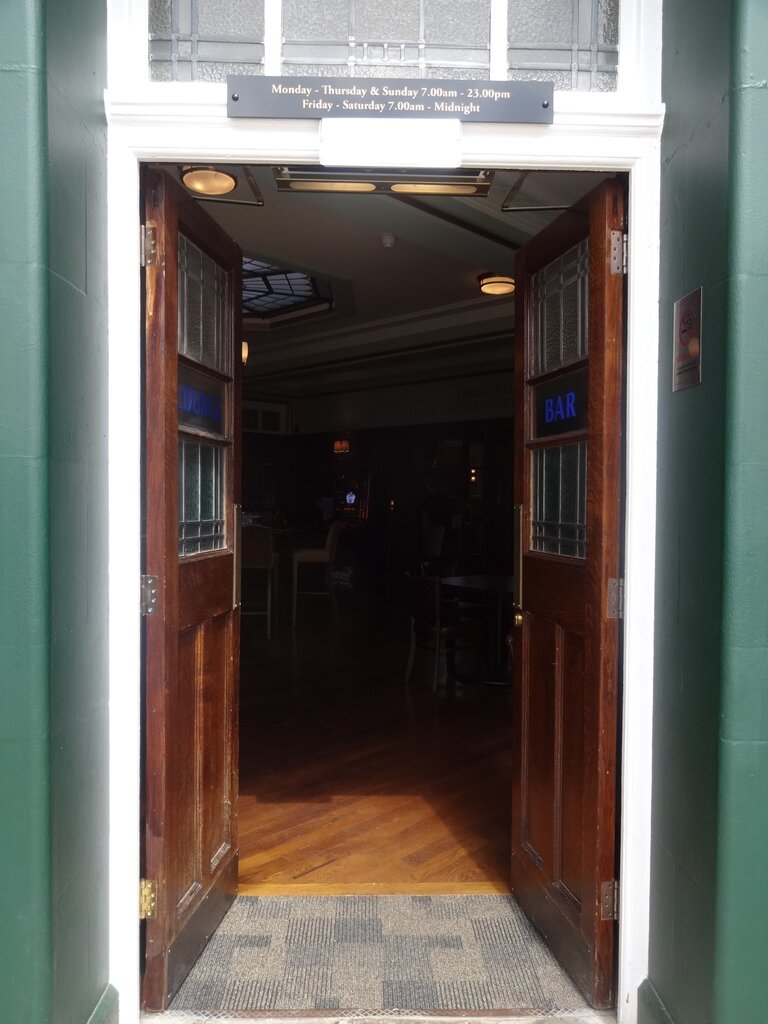 Entrance
Entrance
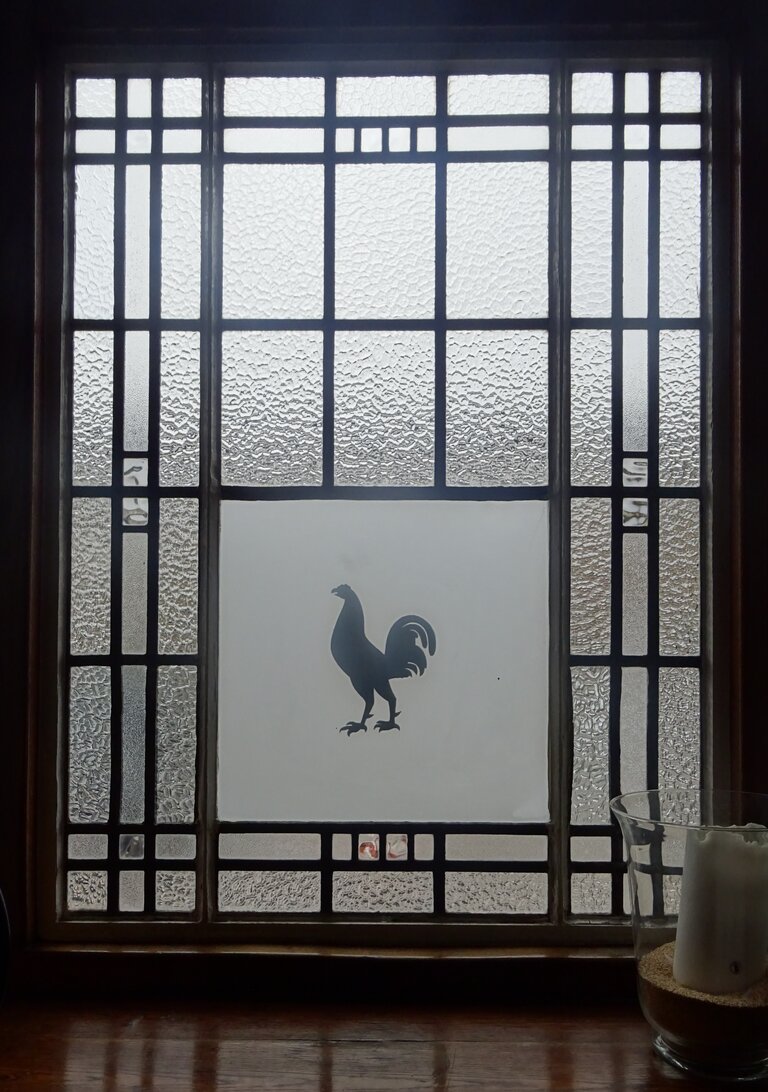 Green Room Window
Green Room Window
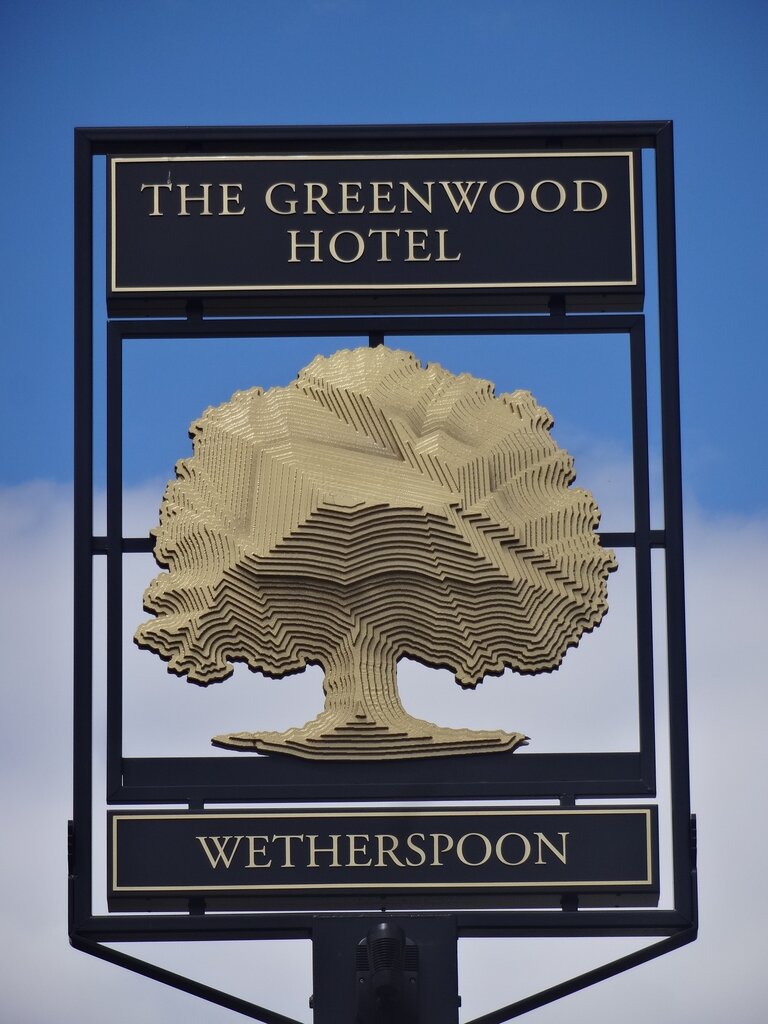 Pug Sign
Pug Sign
 Tiling
Tiling
 Tiling
Tiling
